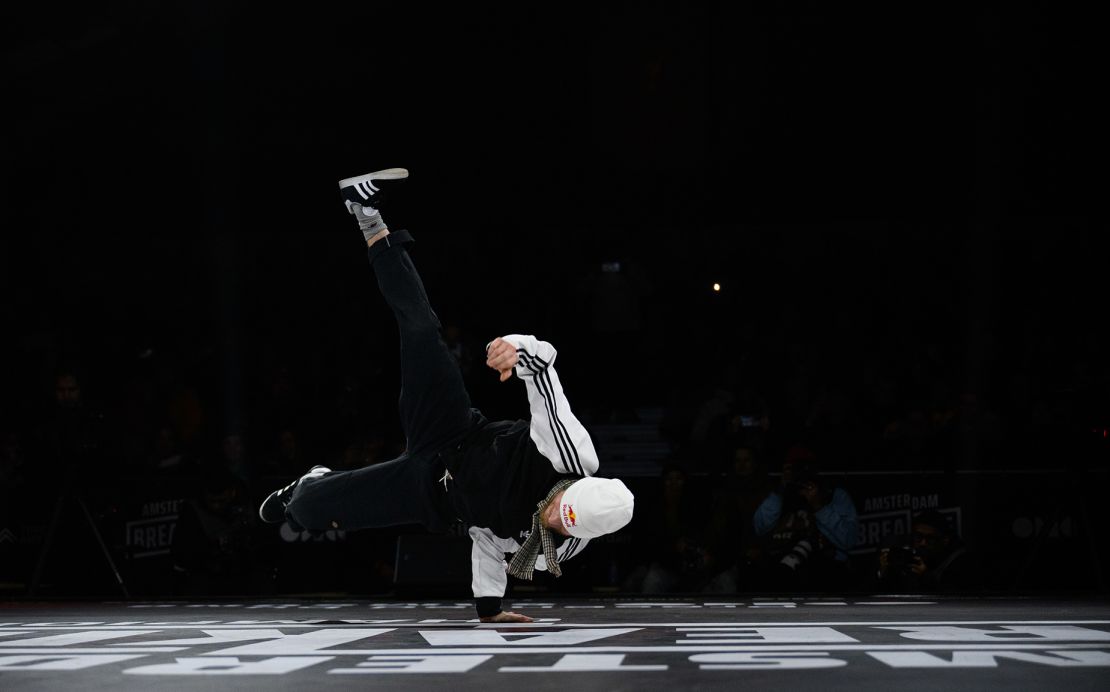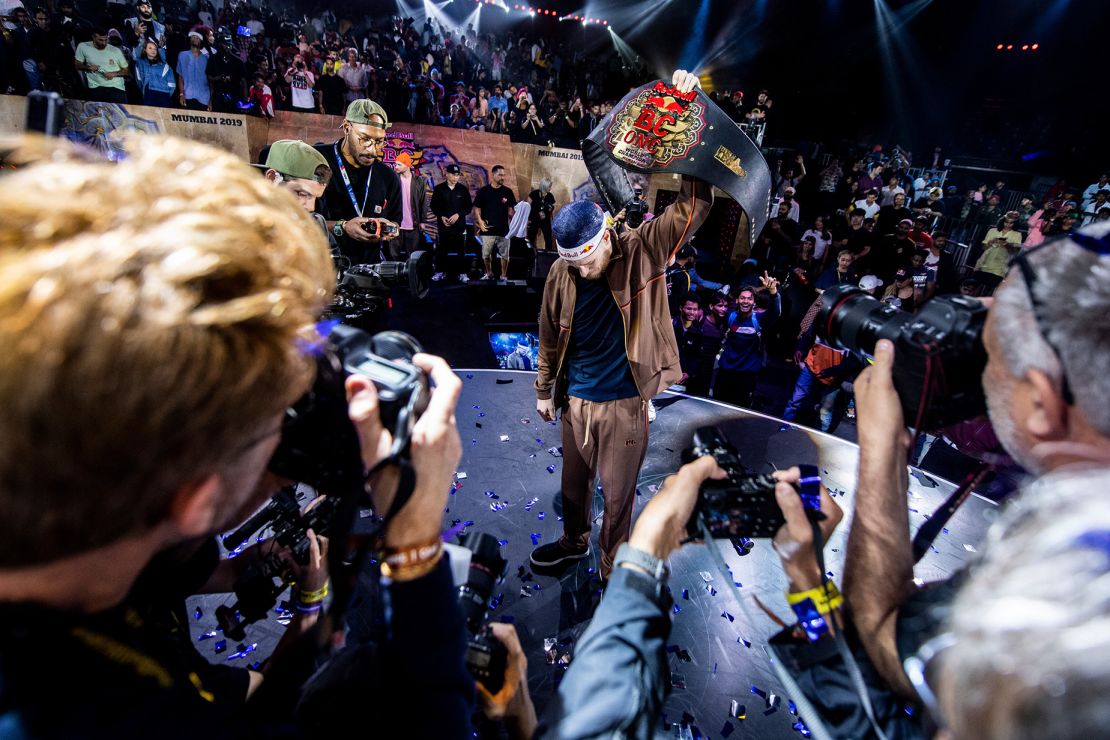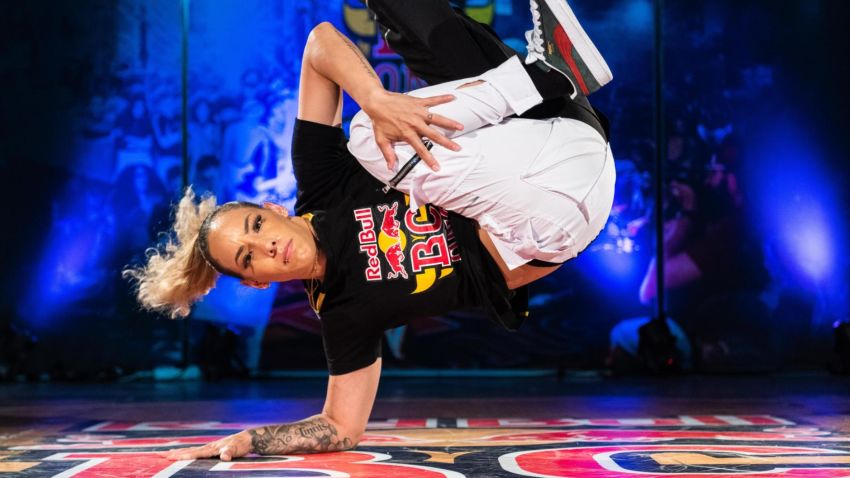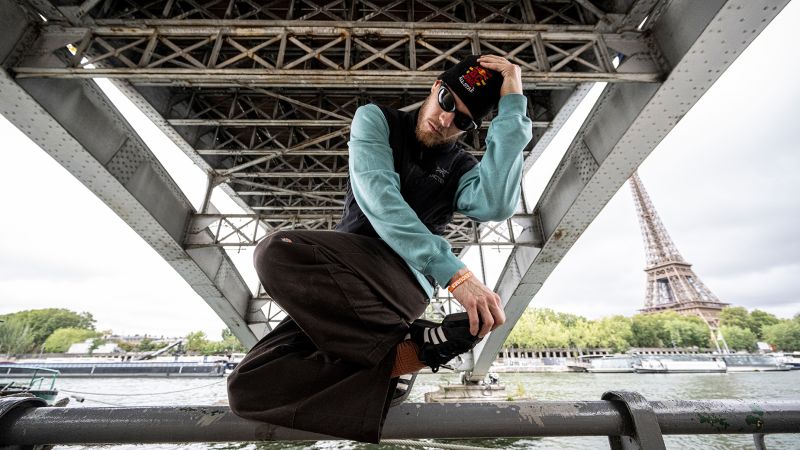CNN
—
To the tune of a Miles Davis trumpet solo, Menno van Gorp is stepping up his training ahead of this year’s Paris Olympics.
The jazz musician has been an influential figure in van Gorp’s breakdance career, his smooth sound and freewheeling rhythms a constant source of inspiration for each new routine.
“I love to practice on jazz,” van Gorp tells CNN Sport. “It gives me more freedom and it just triggers more creativity when I move to jazz. Also, the part of improvisation in jazz is huge. I think that really reflects well with breaking.”
The 35-year-old van Gorp, a competitive b-boy from the Netherlands known simply as Menno, is a medal hopeful at the upcoming Olympics, where breakdance – or breaking – will make its debut as the Games’ newest sport.
Suddenly seeing their discipline labeled as a sport isn’t something that necessarily sits comfortably with b-boys and b-girls – the name given to men and women who compete in breaking.
It has some similarities with pre-existing Olympic events like martial arts, gymnastics, and skateboarding, but will also bring its own subversive identity to this year’s Games.
“We’re under the flag of sports now, but to me, it’s still also an art,” says van Gorp, who calls himself an “artlete” on social media. “I think breaking is so unique that it’s impossible to put it in one box … It’s many things together, and it’s also an expression.”

A high-scoring breakdance routine requires a unique blend of strength, stamina, agility, and flexibility, as well as the mental wherewithal to ensure that moves aren’t repeated and flow seamlessly into each other.
“You use literally every part of your body,” says van Gorp, “including your ears and your brains and your heart and your toes and your heels … I use my fingertips; I use the point of my elbow – every part in your body that you can use.
“It takes a lot of physical abilities, I think, to be a good breaker.”
Van Gorp practiced judo before he took up breaking, which found a foothold in his hometown of Tilburg during the 1990s.
“First everybody was collecting Pokémon cards, then everybody was yo-yoing,” he says. “Suddenly, everybody started breaking.”
After eight years of judo, he had started to find the sport too restrictive, the scope for creativity too narrow.
“Breaking gave me so much freedom compared to judo,” van Gorp adds. “Breaking has total freedom for me, so that’s why I really liked it. In other sports, you’re always limited by a lot of rules.”
Originating in New York in the late 1960s, breaking has since gained global popularity and today is synonymous with a specific subgenre of street style – sneakers, sweatpants, and baseball caps worn at an angle.
Van Gorp, like many kids discovering breakdance for the first time in the early 2000s, gained insight from watching grainy videos and talking through routines with his friends before joining practices around the Netherlands and overseas.

It was in winning the UK championships in 2007 that van Gorp says he “exploded onto the scene” and started to compete more regularly.
He has gone on to win titles all over the world, including at the 2019 WDSF World Breaking Championship and three victories at the Red Bull BC One World Finals – a feat only matched by South Korean b-boy Hong 10.
Breaking is the first World DanceSport Federation (WDSF) event to be added to the Olympic program, and in Paris, 16 b-boys and 16 b-girls will face off in one-on-one battles set against a DJ’s hip-hop soundtrack.
They take it in turns to perform a routine and are scored by a panel of judges based on six criteria: creativity, personality, technique, performativity, variety, and musicality.
With the Olympics in mind, van Gorp is breaking for up to two and a half hours each day, plus gym sessions and calisthenics – body-weight strength training like push-ups and sit-ups – in pursuit of winning gold.
Such an accolade, he says, would be a huge boost for his profile.
“I’m building here a dance studio in Rotterdam and I’m working also on the new generation here,” van Gorp explains. “Getting a medal I think would be so helpful for my career after breaking to make stuff happen for the next generation – that type of stamp on your name.”
<div data-uri="cms.cnn.com/_components/video-resource/instances/cltcwrbus00123b6hovof2mcm@published" data-component-name="video-resource" data-editable="settings" class="video-resource" data-fixed-ratio="16×9" data-parent-uri="cms.cnn.com/_components/video-resource/instances/h_b5b4ad751fb63b5bac8fcffa492f582f@published" data-video-id="sports/2023/01/18/breakdancing-breaking-olympic-sport-lbb-orig.cnn" data-live="" data-analytics-aggregate-events="true" data-custom-experience="" data-asset-type="hlsTs" data-medium-env="prod" data-autostart="unmuted" data-show-ads="true" data-source="CNN" data-featured-video="true" data-headline="The coolest new Olympic sport is one you may have tried 30 years ago" data-description="This sport started in Black and Latino communities in the US in the 1970s and while it lost popularity in the United States, it stayed alive overseas. It's here again with a vengeance and heading to the Paris 2024 Olympics. " data-duration="02:48" data-source-html='<span class="video-resource__source"> – Source:
<a href="https://www.cnn.com/" class="video-resource__source-url">CNN</a>
</span>' data-fave-thumbnails='{"big": { "uri": "https://media.cnn.com/api/v1/images/stellar/prod/230118084247-breakdancing-olympic-sport-stand.jpg?c=16×9&q=h_540,w_960,c_fill" }, "small": { "uri": "https://media.cnn.com/api/v1/images/stellar/prod/230118084247-breakdancing-olympic-sport-stand.jpg?c=16×9&q=h_540,w_960,c_fill" } }' data-vr-video="false" data-show-html="” data-byline-html='<div data-uri=”cms.cnn.com/_components/byline/instances/byline_h_b5b4ad751fb63b5bac8fcffa492f582f-video-resource@published” class=”byline” data-editable=”settings”>
<div class=”byline__images”>
</div>
<div class=”byline__names”>
<span class=”byline__name”>John Sinnott</span>
</div>
</div>’ data-check-event-based-preview=”” data-network-id=”” data-publish-date=”2023-01-18T14:14:33Z” data-video-section=”sport” data-canonical-url=”https://www.cnn.com/videos/sports/2023/01/18/breakdancing-breaking-olympic-sport-lbb-orig.cnn” data-branding-key=”life-but-better-fitness” data-video-slug=”breakdancing-breaking-olympic-sport-lbb-orig” data-first-publish-slug=”breakdancing-breaking-olympic-sport-lbb-orig” data-video-tags=”african americans,continents and regions,demographic groups,domestic alerts,domestic-international news,domestic-us news,europe,france,iab-olympic sports,iab-sports,iab-summer olympic sports,international alerts,international-us news,latino people,minority and ethnic groups,north america,olympics,paris,population and demographics,society,sports events,summer olympics,the americas,united states,western europe” data-details=””>

02:48
– Source:
CNN
On top of establishing his dance school, van Gorp is also an amateur photographer; he paints – typically large canvasses streaked in brightly-colored lines – has his own clothes brand and is a father of two.
His life, therefore, is a juggling act while training for the Olympics, which is all-consuming at the moment. In order to qualify for the Games, van Gorp will hope to earn selection via the Olympic Qualifier Series in May and June.
Like every breaking competition, that will test not only his movement and creativity in the heat of a battle but also his memory: originality is rewarded, and contestants are scored down for repeating moves between rounds.
“It all comes down to preparation,” says van Gorp. “I study my material a lot. I’ve found memory hacks to remember my stuff, so I give names to my moves. I make rhymes, I connect them with moments in life. I connect them with music I like.
“And I write stuff down, I try it, I read it back, I visualize, and you pick between competitions what material you have left. And then in the battle it should all just fall in place.”

Van Gorp compares himself to a “cage fighter” in the middle of a battle – “I really need to have that fire … it’s not about being a nice guy anymore,” he says – and believes that he thrives on being spontaneous and unpredictable during competitions.
“A lot of unexpected movements, a lot of creativity,” he identifies as features of his routines. “My style is definitely based on flow and transitions, and I think you need to have a very well-trained eye to understand what I’m really doing.
“If you blink one time or if you look away, you might have missed an important detail.”
Having a unique style can be key in breaking, as it is with any form of art or music. It’s something that has drawn van Gorp to Miles Davis in particular.
“To see how many times he reinvented himself and he still stayed authentic to himself, that’s a huge inspiration for me,” he says.
Few other, if any, athletes will be honing their craft to the emotive sounds of jazz music ahead of this year’s Olympics, but that’s part of what makes breaking such an intriguing addition.
“If you want to make art,” says van Gorp, “you want to make something that’s really you – not somebody else.”






